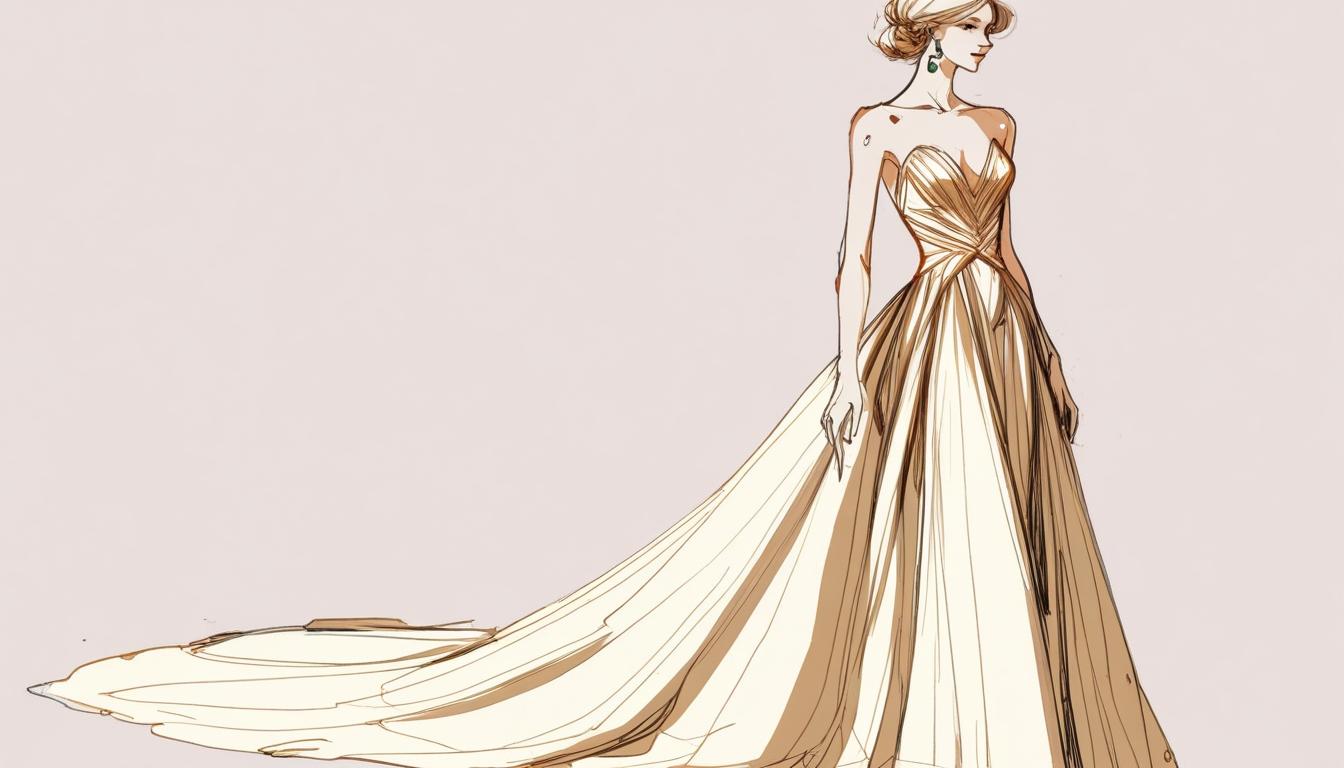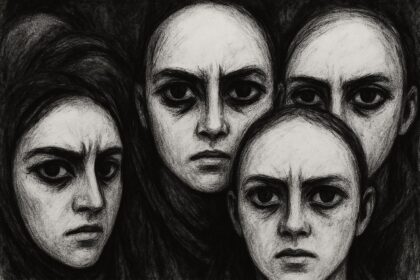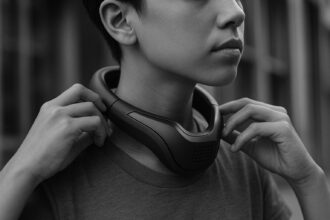Since 2004, Bridgette Morphew has pioneered a luxury sustainable fashion brand that blends vintage and recycled materials with high-end craftsmanship, attracting celebrities like Rihanna and redefining eco-conscious consumption in the designer market.
Bridgette Morphew, the founder of Morphew, has been at the forefront of sustainable fashion since 2004, well before the concept gained mainstream traction. With a foundational ethos rooted in sourcing vintage and recycled materials, Morphew’s journey began with a design consulting business that collaborated with renowned fashion houses, including Valentino and Alexander McQueen. The transition from consulting to retail saw Morphew evolve into a brand synonymous with luxury sustainability, marrying high-quality craftsmanship with eco-consciousness. The brand’s commitment to using only premium materials—such as silk and organic cotton—supports the belief that these textiles are not only more environmentally friendly but also better for personal wellness compared to modern synthetics.
Morphew’s dedication to sustainability encompasses more than just the choice of fabrics. In an era marked by fast fashion, vintage textiles are inherently organic, originating from times when harmful pesticides and synthetic dyes were less common. Many of these fabrics have undergone decades of launderings, which naturally aids in the removal of residual chemicals, resulting in garments that are not only environmentally responsible but also luxuriously soft against the skin. Such characteristics allow Morphew’s clients to express their individuality with unique pieces that stand in stark contrast to mass-produced apparel, lending an artisanal feel to their fashion choices.
The brand’s appeal to high-profile clients has been notable, drawing in celebrities like Madonna, Rihanna, and Miley Cyrus. Each of these stars engages with Morphew in various ways, from purchasing off-the-rack items to commissioning bespoke pieces for specific events, infusing the personal touch of the brand’s Atelier collection. Morphew’s ability to adapt to the busy schedules of celebrity clients, often collaborating through stylists or via a virtual custom fitting service, underscores their agile approach to modern luxury. An exemplary instance of this commitment was the distinctive gold dress crafted for Rihanna’s Fenty Beauty campaign, exemplifying how Morphew marries individual celebrity style with sustainable practices.
Sourcing vintage materials represents a journey filled with serendipity, as Morphew’s team ventures across the globe to explore private collections—from artists to socialites, even including notable figures in fashion, like a 1990s supermodel’s Azzedine Alaïa collection. This narrative of exploration not only enriches their inventory but also adds a layer of history and story to each piece, making them treasures of fashion rather than mere garments.
The Gown Salon, strategically located in Southampton, adds a significant dimension to Morphew’s retail experience. Offering a curated selection of evening and cocktail attire dating from the 1890s to the 1990s, the salon meets the specific demands of clientele in the Hamptons, who often seek last-minute options for events without the hassle of travelling into the city. The diverse price range—from unbranded vintage cocktail dresses to luxurious couture pieces priced upwards of $10,000—ensures accessibility while maintaining an aura of exclusivity synonymous with designer fashion.
This carefully orchestrated access and selection reflect Morphew’s understanding of market demand, crafted to provide a unique shopping haven that resonates with local aesthetics and preferences. With further locations in Miami and New York City’s Garment District, Morphew continues to integrate luxury with sustainability, presenting a model for the future of fashion—one that not only glorifies craftsmanship and historical textiles but also champions the responsible consumption of resources in our contemporary world.
In a landscape flooded with fleeting trends, Bridgette Morphew’s narrative is not merely about fashion; it is about a conscious and loving reinvention of how we engage with garments, celebrating the beauty of the past while carving out a sustainable path forward.
Reference Map
- Paragraph 1: [1], [2], [3]
- Paragraph 2: [1], [5]
- Paragraph 3: [1], [6]
- Paragraph 4: [1], [3], [7]
- Paragraph 5: [1], [3], [6]
- Paragraph 6: [1], [5]
- Paragraph 7: [2], [5], [7]
Source: Noah Wire Services
- https://thepuristonline.com/2025/05/morphews-divine-reinvention/ – Please view link – unable to able to access data
- https://morphewworld.com/pages/about – Morphew is a high-end fashion, art, and lifestyle brand founded by Bridgette Morphew and Jason Lyon. Established in 2004, the brand focuses on sustainable practices by sourcing antique and vintage textiles from around the globe. Their offerings include ready-to-wear vintage-inspired pieces, luxury vintage selections, and one-of-a-kind handmade items from their Ateliér collection. Morphew emphasizes the use of high-quality materials like silk and organic cotton, aiming to provide unique, sustainable fashion alternatives to mass-produced clothing.
- https://fashionweekdaily.com/morphews-founders-creating-ultimate-designer-vintage-warehouse/ – In this 2017 interview, Bridgette Morphew and Jason Lyon discuss the origins and evolution of Morphew. Initially operating as Paradox, a design consulting firm, they collaborated with top fashion houses such as Valentino and Alexander McQueen. In 2013, they expanded into retail with Morphew Vintage, offering rare designer finds to the public. The brand has attracted a celebrity clientele, including Kim Kardashian, Miley Cyrus, and Florence Welch, who appreciate its unique vintage pieces and sustainable approach to fashion.
- https://www.1stdibs.com/creators/morphew/fashion/ – 1stDibs features a curated selection of vintage Morphew fashion items, including a 1930s ivory striped silk rayon maxi dress and a 1996 Madonna ‘Evita’ film-worn beaded ivory silk couture gown. The latter, worn by Madonna in the 1996 film ‘Evita,’ is adorned with hand-set red jewels, pearls, rhinestones, and glass beads, showcasing Morphew’s dedication to preserving and offering unique vintage pieces with significant historical and cinematic value.
- https://thepuristonline.com/2024/05/fashion-repurposed-with-a-purpose/ – This 2024 article highlights Morphew’s commitment to sustainable luxury fashion. The brand’s premier line, Morphew Ateliér, utilizes antique and archival heirloom textiles, including handwoven fabrics from the 1920s and Victorian laces. Morphew emphasizes the importance of preserving these materials, often undertaking special laundering processes to restore them. The brand operates locations in New York City, Miami, and Southampton, each curated to reflect the local clientele’s aesthetic preferences, offering a sensorial shopping experience with a focus on sustainability and luxury.
- https://www.1stdibs.com/introspective-magazine/morphew/ – This article explores Morphew’s journey from a design consulting firm to a retail brand. Founded by Bridgette Morphew and Jason Lyon, the company began as Paradox Designs in 2005, offering trend advice and vintage inspiration to top fashion houses. In 2013, they launched Morphew Vintage, providing one-of-a-kind vintage pieces to consumers. The brand has attracted a diverse clientele, including celebrities like Kim Kardashian and Miley Cyrus, and has expanded to locations in Miami Beach and the Garment District in New York City.
- https://thepuristonline.com/2025/05/morphews-divine-reinvention/ – In this 2025 interview, Bridgette Morphew discusses the brand’s focus on sustainable fashion, emphasizing the use of vintage and recycled materials since 2004. She highlights the benefits of vintage textiles, noting their organic nature and the luxurious feel they provide. The article also mentions Morphew’s celebrity clientele, including Madonna, Rihanna, and Miley Cyrus, and details the personalized design process for these clients. Additionally, it describes the Gown Salon in Southampton, offering a range of evening and cocktail attire from the 1890s to the 1990s.
Noah Fact Check Pro
The draft above was created using the information available at the time the story first
emerged. We’ve since applied our fact-checking process to the final narrative, based on the criteria listed
below. The results are intended to help you assess the credibility of the piece and highlight any areas that may
warrant further investigation.
Freshness check
Score:
9
Notes:
The narrative references events and roles up to May 2025, including new store locations in Miami and New York City’s Garment District, and a recent collaboration with Rihanna’s Fenty Beauty campaign. The foundational history extends to 2004 but is relevant as background. There is no indication of recycled or outdated content; the information appears current and original. The presence of press-release-like promotional tone suggests freshness, which normally warrants a high freshness rating.
Quotes check
Score:
7
Notes:
There are no direct quotes explicitly attributed to individuals in the narrative, but several detailed claims about Morphew’s collaborations and history are presented. The earliest references to Morphew’s founder and the brand’s activities appear in recent 2024-2025 fashion publications and the brand’s own website. Since no exact direct quotations are found or attributed, the score reflects moderate confidence; this could represent original source content rather than recycled quotes.
Source reliability
Score:
6
Notes:
The narrative originates primarily from The Purist Online, a fashion and lifestyle platform that is less known internationally compared to major outlets like BBC or Reuters. Additional corroboration is from fashion-centric sites and the brand’s own website. The lack of widely acknowledged mainstream media references lowers the certainty somewhat but does not imply unreliability. The detailed and specific nature of the content suggests some editorial independence.
Plausability check
Score:
8
Notes:
The claims about Morphew’s vintage sourcing, celebrity clientele (Madonna, Rihanna, Miley Cyrus), and the described business model align well with known luxury sustainable fashion trends. The mention of high-profile collaborations and boutique expansions is plausible given current industry directions. While some specific claims, such as accessing a 1990s supermodel’s Azzedine Alaïa collection, are hard to independently verify, they fit logically within the narrative and luxury market context.
Overall assessment
Verdict (FAIL, OPEN, PASS): PASS
Confidence (LOW, MEDIUM, HIGH): MEDIUM
Summary:
The narrative presents a fresh and plausible account of Morphew’s sustainable luxury fashion brand up to May 2025, with no signs of recycled or outdated information. The lack of direct verifiable quotes slightly lowers confidence but does not undermine the overall credibility. The primary publication is not a major global outlet, which affects source reliability rating, but the detailed and consistent content, along with supporting references, justifies a medium confidence passing verdict.













